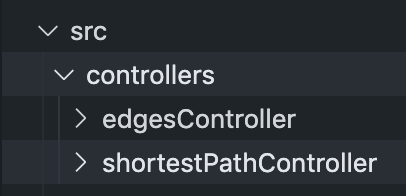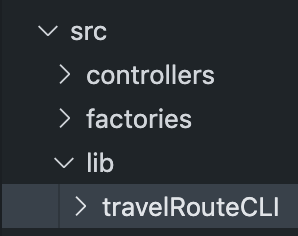For this project I worked on the SOLID principles and used some Design Patterns. The core functionality is 100% covered by tests.
Here is the brain, the core functionality is written here in 3 classes: CSVWriter, CSVReader and the ShortestPathCalculator.
All these classes respect the Single Responsibility Principle. The ShortestPathCalculator was designed using the Open-Closed Principle, I'll explain it later.
Where I store the edgesController (used in a POST request to add an edge to the csv) and the shortestPathController (used in a GET request to find the shortest path).
Here I'm storing the graphFactory, a function that reads the csv, builds a graph object and return it.
Here's the travelRouteCLI, where we can run it via terminal and see the shortest path from the graph.
This class was designed to follow the Open-Closed Principle so if we need to add a different calculation algorithm (BellmanFord for example) we won't need to modify this class code, we can just extend it like in the code below. To achieve it I used the Strategy Design Pattern
We can see that if we need to change the calculus from Dijkstra to BellmanFord we only need to pass a BellmanFord class instance. The class only needs to implement the IShortestPathCalculation interface:
First of all pull the project and install the dependencies
$ git pull https://github.com/emmanuelperotto/travel-route.git
$ cd travel-route
$ yarn install
$ yarn run cli input-routes.csv
Start the server so you can send requests using localhost
$ yarn start
The API provides two routes:
-
GET /shortestPath: here you need to send "sourceNode" and "targetNode" via query params. The API returns 200 for success and 400/422 for failure.
-
POST /edge: here you need to send "sourceNode", "targetNode" and "weight". The API returns 201 for success and 422 for failure.









